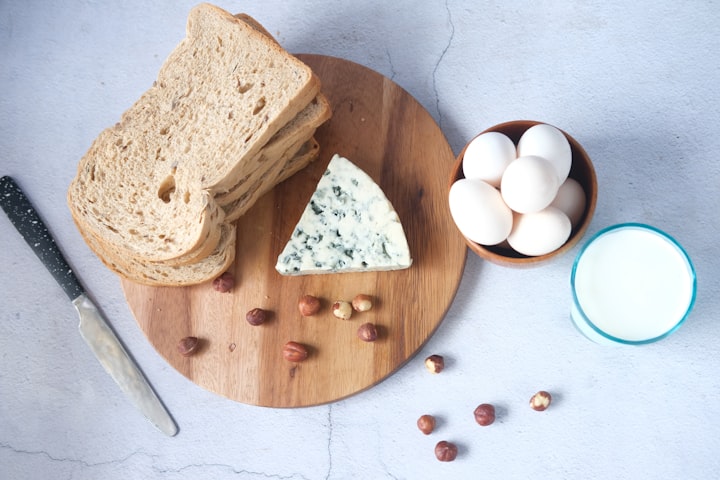Making Yoghurt from Home and More Dairy Tips
If you have leftover yoghurt, why not try making your own. This makes 1 litre of yoghurt.

Tip ➡️Don’t lose track while you’re cooking, click on an ingredient or step to tick it off so you know where you are up to.
Ingredients
1. 900ml of full fat milk
2. ¼ cup plain yogurt, just make sure the label says “live” or “active” cultures
Method
1. Place milk in a medium pot and heat to around 85°C (use a thermometer or for around 10 mins)
2. Remove pot from heat and allow to cool to around 40°C
3. Add yoghurt to a 1 litre jar, put in half a cup of the warmed milk and shake/stir gently to combine
4. Add the rest of the warm milk and shake gently
5. Wrap in a tea towel and keep in a warm spot for around 12 hours (overnight is perfect). This could be your hot water cupboard, a sunny window sill,or a chilly bin or a yoghurt maker if you have one
COOKING TIPS 🔪
Cooking Tips
Always leave ¼ of a cup of yoghurt at the end of the jar and then you can start again!
If you want a thicker yoghurt, strain through a muslin cloth.
For a dairy free alternative you can follow a similar process to make coconut yoghurt.
Don’t be a scared when it comes to dairy
Dairy products can be the difference between a good meal and a great meal – after all, what good is an apple crumble without a dollop of cream?
Yet Kiwis throw away 8,426 tonnes of dairy products every year.
Why? We are overly cautious when it comes to the dates printed on dairy products, often throwing them away the moment their best before date arrives.
Unlike use by dates, best before dates relate to quality, not food safety.
The best before date has been determined by the eating experience – when the product will start to lose quality and flavour – rather than when it will become dangerous to eat. Once opened, you should always follow the instructions on the container or bottle, such as “consume within three days.”
Dairy products are not sterile – they will eventually go off – so it is important to use your senses to determine if the food is safe to eat. Helpfully, dairy products are likely to show signs of spoiling, eg lumps in your milk, a sour smell or mould. If this is the case, you should not consume them.
The most important thing when it comes to dairy products is to keep them cold – always keep them refrigerated between 1 and 4⁰c.
Here’s what else you should know about dairy products:
Milk
Milk is sensitive to temperature fluctuations and even short periods at a warm temperature can allow pathogens to develop. However milk begins to visibly curdle when it goes off, so if it is bad, you’ll know about it. In New Zealand, it is unsafe to consume sour milk.
If you have bought too much milk, you can freeze it for when you need it. Make sure you tip a little into your cuppa before you freeze the bottle so the milk has room to expand.
Ways to use up milk:
Make a smoothie or a milkshake
Make your own yoghurt or junket
Make buttermilk for baking or pancakes
Baked bread pudding
Cheese
The main reason we throw away cheese is because it goes mouldy. The best way to store a block of cheese is to wrap it tightly in its original packaging and place it in a cheese bag in the fridge. (Cheese bags are made of cloth and can be purchased here.)
It is a normal process for cheese to grow mould – after all, mould is what gives blue cheese its name. If your block of cheese grows mould you can cut it off and the rest of the block will be safe to eat – just make sure that you cut off a couple of centimetres around the mould.
Cheese also freezes well, especially if it is grated as it makes it easier to access small quantities at a time.
Extra tip: When handling cheese, try using the packaging or wax paper rather than directly touching it with your fingers to prevent any transfer of bacteria and mould spores that may be on your fingers.
Ways to use up cheese:
Tim Shadbolt’s famous cheese rolls
Cheesy vegetable ramekins
Sarah Wilson’s Super Greens Fondue
Cheese crisps
Yoghurt
We often throw away yoghurt because it has gone watery. This process is the whey separating from the solids, which happens over time. Give the yoghurt a good stir to incorporate the whey and it will be good to eat again.
Ways to use up yoghurt:
Use plain yoghurt as a substitute for mayonnaise
Banana and yoghurt pancakes
Fruit yoghurt pizza
One two three lemon cake
Yoghurt bark
Cream
For many people cream is a “sometimes” ingredient, which they only buy when they’re making a special recipe. If you find that you still have a little leftover, you can freeze the leftover cream. Once thawed, it won’t be any good for whipping, but you can use it for pasta and curries.
When cream curdles it becomes lumpy, or may smell sour. If this is the case, you should not consume it.
Ways to use up cream:
Treat yourself with a splash of cream in your tea or coffee
Add it to scrambled eggs
Drizzle some over soup
Berrylicious ice cream
Butter
Butter is the longest lasting of all dairy products – it can last for many months if it is kept refrigerated, and even longer if you freeze it.
When butter spoils, it may appear pale or have grown mould. A stale or cheesy smell can also be an indicator that it has gone off.
Ways to use up butter:
Make flavoured butter
Use it in baking
Sour cream
Leftover sour cream is a common problem in many Kiwi kitchens. Often purchased for a particular recipe, the last little bit can lurk in the fridge with no purpose before it gets thrown away.
Sour cream can safely last for a week after the container has been opened. If you notice that the water is beginning to separate from the solids, then that it is an indicator that the sour cream needs to be used soon.
If there is any mould on the sour cream or any part of the container, you should throw it away.
Ways to use up sour cream:
As a substitute for mayonnaise in a slaw dressing
Dollop on a baked potato
Mix it with a little sweet chilli sauce or pesto to create a dip or dressing
Add it to a pasta dish or curry
Sarah Wilson’s Super-Greens Fondue
Chicken and cranberry strudel
Soft Cheeses: cream cheese, mascarpone, crème fraiche, cottage cheese, ricotta
Soft cheeses are far more perishable than hard cheeses, so you will need to use them within a short time of opening them. Always follow the instructions on the packet.
If they taste or smell sour, have a watery texture or mould has grown on the cheese or any part of the container, then you should throw it away.
Whilst each product is slightly different, they can be used as substitutes for each other in many recipes.
About the Creator
Z.a.i.n.t.z
🤞🏾Writing to 🧡share❤️ my dreams. 👌🏾💯






Comments (1)
Have you ever thought of putting your recipes and information into a cookbook textbook.